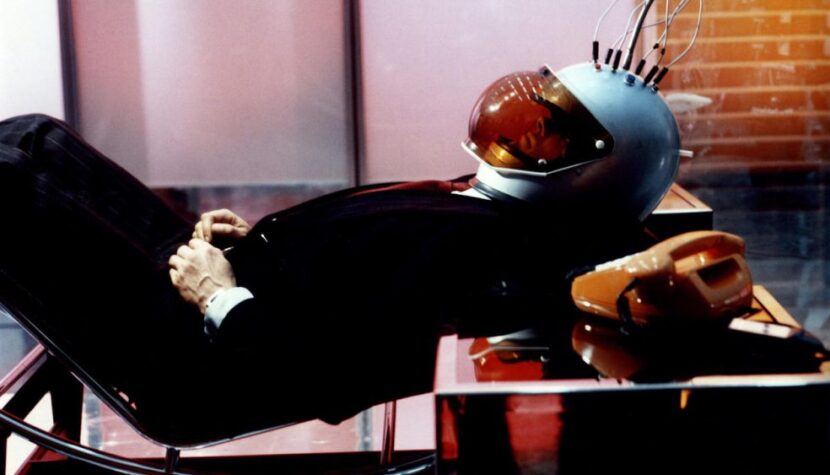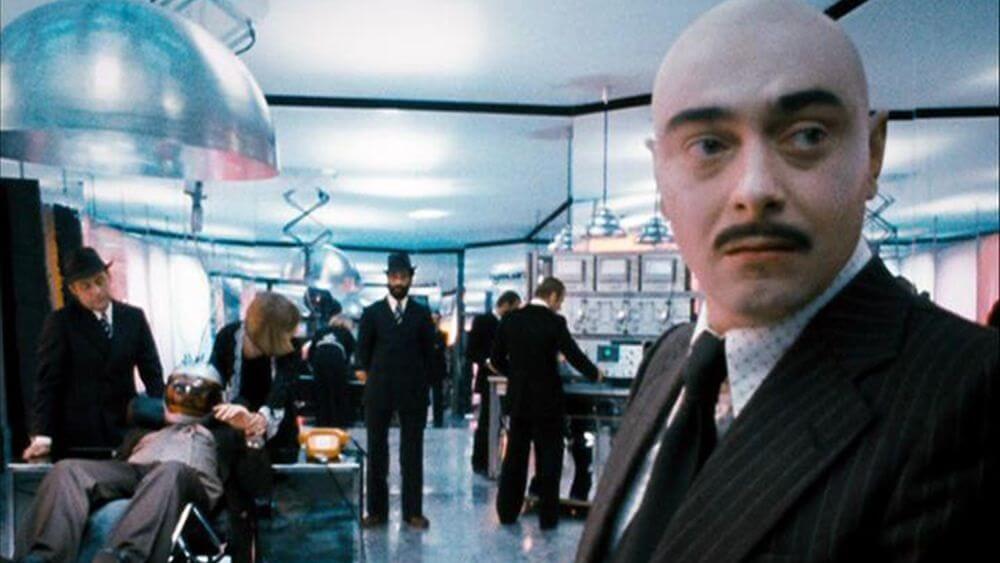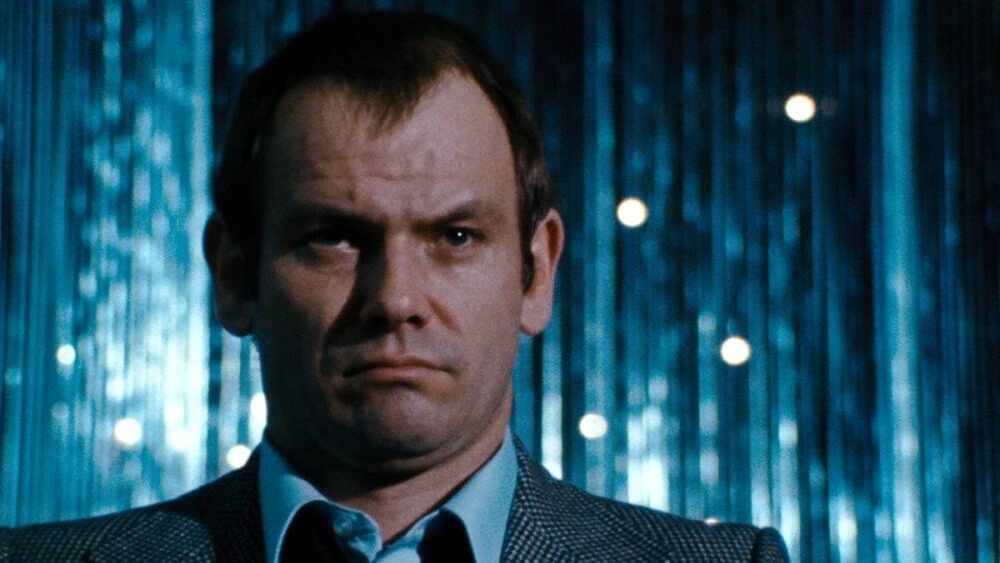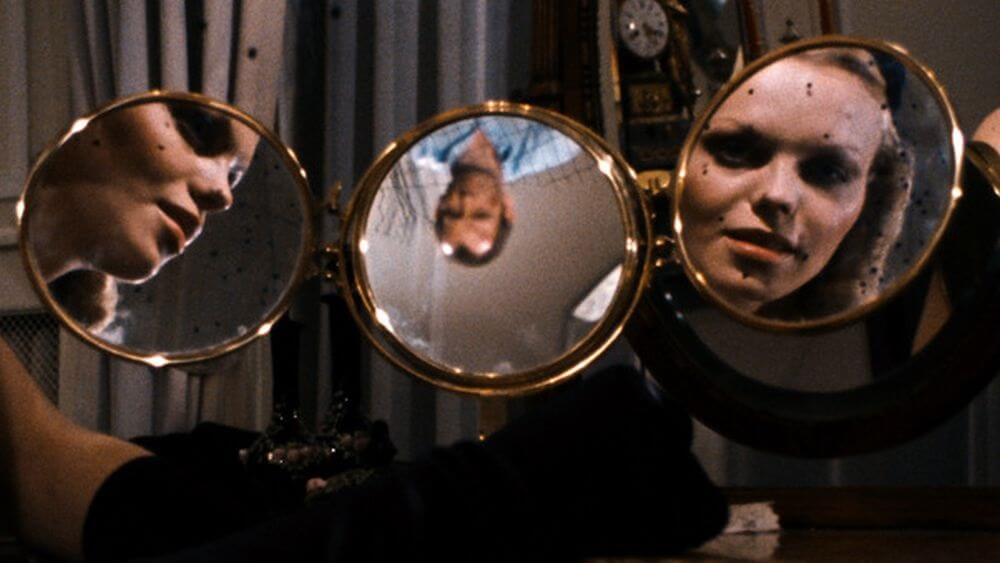WORLD ON A WIRE. Science fiction that foreshadowed “The Matrix” and “Inception”

The World on a Wire is one of the most suggestive, multi-layered, and influential science fiction films that you’ve probably never heard of.
Professor Vollmer works at the Institute of Cybernetics and Future Science as the director of the “Simulacron” program: a computer-generated artificial world whose inhabitants, called “identity units,” live like humans but are unaware that their reality is an advanced simulation. Vollmer discovers something extraordinary and soon dies in a strange accident. Dr. Fred Stiller becomes the successor, continuing research on the simulation and trying to unravel the mystery of Vollmer’s discovery. Stiller notices that some identity units in the simulation gain awareness of the artificiality of their world, attempting even suicide; others want to break into the “real” world (whatever it is). However, even there, extraordinary things happen: the head of the Institute’s security disappears without a trace, headlines change based on memories, and Stiller’s memory increasingly fails. Eventually, one identity unit informs him that he himself is living in a simulation. But how to distinguish the phantom from the original when the differences are nearly impossible to detect?

The World on a Wire is an adaptation of Daniel F. Galouye’s 1964 novel Simulacron-3. Fassbinder filmed it over six weeks for the German ARD television as a two-part miniseries lasting over 200 minutes. It was his fifteenth full-length production in just five years, and in the same year, this remarkably industrious German director made three other films. The cast includes Fassbinder’s favorite actors, such as Klaus Löwitsch, Barbara Valentin, Ulli Lommel, and Margit Carstensen. For many years, The World on a Wire remained a little-known curiosity among the nearly forty films in Fassbinder’s repertoire, overshadowed by titles like The Merchant of Four Seasons (1973), The Marriage of Maria Braun (1978), and Lili Marleen (1981). The adaptation of Galouye’s book gained proper attention only in 2010 when, thanks to the efforts of the Rainer Werner Fassbinder Foundation, a digitally reconstructed version of the film was screened at the 60th Berlin Film Festival. Since then, Fassbinder’s work has been shown worldwide and released on DVD and Blu-ray.
This work is both old-fashioned and incredibly modern. Old-fashioned because, as a low-budget television production, it doesn’t showcase special effects or fast-paced action but relies on refined set design and philosophically infused dialogues. Modern (or rather timeless) because the theme of virtual reality still resonates widely in popular culture. Of course, the concept of the world as an illusion is much older – the Vedic religion already had the term “maya,” denoting a veil concealing the true nature of the world and human identity. The Taoist master Zhuangzi and his allegory of a sage dreaming he’s a butterfly also come to mind, questioning whether he is a man dreaming of a butterfly or perhaps a butterfly dreaming of a man. Examples can be multiplied: Hilary Putnam’s thought experiment about a brain in a vat, Descartes and his evil demon theory, Zeno of Elea’s paradoxes about motion as an illusion. The last two ideas are explicitly referenced in The World on a Wire.

Virtual reality as an indistinguishable simulation from the “real” reality is a particularly attractive theme for science fiction authors. Not only for Daniel Galouye, whose novel served as the basis for Fassbinder’s film but also for Stanisław Lem and especially Philip K. Dick, who made the opposition of reality – simulation, authentic – artificial, truth – falsehood, human – android the main themes of his work. “From the very beginning, we find ourselves in the realm of total simulation, without source and beginning, immanent, without past and future, in the space of free flow. […] The double disappeared, the copy does not exist; we are already in another world that is no longer different, in a world devoid of mirrors, possibilities of projection, and utopias that could be its reflection – simulation is insurmountable, untranscendable, matte, without exterior – we can no longer even go to the other side of the mirror, as in the golden age of transcendence,” wrote French philosopher Jean Baudrillard about Dick, and the same can be said about the plot of The World on a Wire.
Especially interesting in this context is the symbolism of mirrors mentioned by Baudrillard – presented extremely often in Fassbinder’s telefilm. The elegant interiors of the Institute of Cybernetics and Future Science are full of glossy surfaces: monitors, mirrors, leather sofas, tables with glass tops, decorative panels, transparent partitions, and mirrored pedestals on which replicas of Greek statues stand. The faces of the characters populating this world regularly appear in frames as mirror reflections, emphasizing the film’s central theme: the world as doubling and inversion, and people as doppelgängers and clones. “You are nothing more than an image created by others,” Stiller tells Secretary of State von Weinlaub, presenting him with a pocket mirror. After all, mirrors do not show the person as they truly are but reveal their opposite; the image in the mirror is quite literally a virtual image, and from there, it is close to the concept of virtual reality. In this world, there are no accidents.
The philosophical (ontological, epistemological, etc.) consequences of simulation are not the only theme of Fassbinder’s multi-layered film. “Simulacron,” generated by computational machines at the Institute of Cybernetics and Future Science, has a specific purpose: predicting future economic, political, and social events with accuracy that allows determining the directions in which humanity will move. In other words, its application involves creating a world model identical to the real one so that conclusions can be drawn based on events in the simulation, which can then be applied in the real world. Those with such knowledge will have an advantage over those deprived of this kind of valuable information. It’s not just about improving living conditions in the future but about dominating competitors. In The World on a Wire, the issue concerns the metal market, but it’s not difficult to imagine the use of the virtual world for more nefarious purposes. At this point, Fassbinder’s film becomes a kind of social critique.

But that’s not all: The World on a Wire can also be seen as a metaphor for the act of creation, in this case, the creation of a film, and thus as a self-reflection on the essence of cinema. What is a film if not a more or less skillful imitation of the world, an artificial creation imitating reality in which viewers immerse themselves? Not without reason, in one scene of Stiller compares identity units – digital avatars created in the image and likeness of people – to characters on television, who dance for the pleasure of the audience. In another sequence, his superior Siskins watches on the monitor screen his simulated doppelgänger participating in a musical entertainment program. “The world’s a stage, and all the men and women merely players, / They have their exits and their entrances. / Each man in his time plays many parts, / His acts being seven ages” wrote Shakespeare at the turn of the 16th and 17th centuries. Who is the director, and who is the actor in the play titled The World on a Wire? The answer is not unequivocal, and that is also the strength of this challenging but ambitious film, which will be a feast for viewers longing for quality science fiction.
Half a century after the television premiere of The World on a Wire, its influence on later and more popular films such as Ridley Scott’s Blade Runner (1982), Steven Lisberger’s Tron (1982), Douglas Trumbull’s Brainstorm (1983), David Cronenberg’s Videodrome (1983) and eXistenZ (1999), Brett Leonard’s The Lawnmower Man (1992), Kathryn Bigelow’s Strange Days (1995), Mamoru Oshii’s Ghost in the Shell (1995), Alex Proyas’s Dark City (1998), Satoshi Kon’s Paprika (2006), Christopher Nolan’s Inception (2010), and Josef Rusnak’s The Thirteenth Floor (1999) is easy to see. The Wachowskis must have drawn from Fassbinder’s film for The Matrix, borrowing concepts such as the “nested” nature of the simulation (one false reality leads to another, etc.), the ability to enter it anywhere, the phone as a teleport between worlds, and death in the simulation resulting in death in reality. Even the Matrix’s traitor Cypher looks like a descendant of Fassbinder’s double agent Holm. In this world, there are no accidents.

